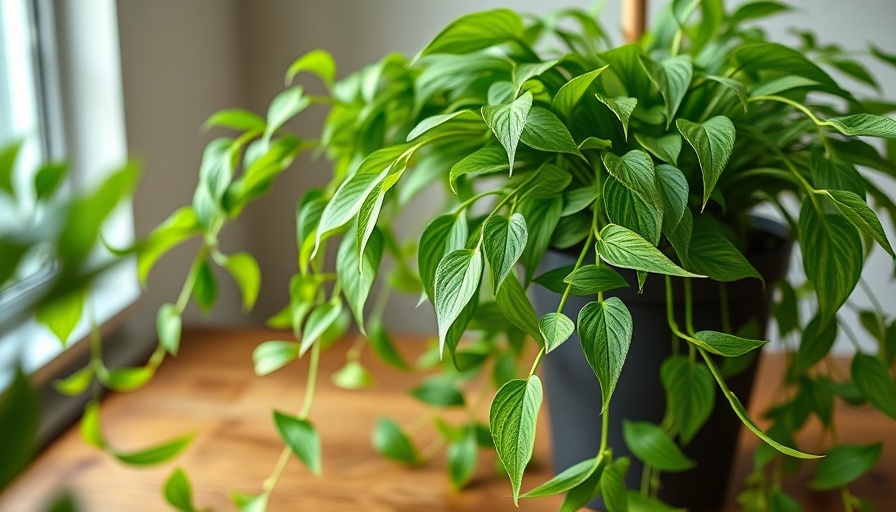
Unlocking the Secrets to a Bushier Spider Plant
Have you ever admired the lush, bushy appearance of a spider plant and wondered how to achieve that look for your own? Thanks to their hardy nature and resilience, spider plants are perfect for beginners in the world of indoor gardening. With the right techniques, making your spider plant treetop-worthy is not just a dream—it's entirely attainable!
Propagation: The Key to Dense Growth
One of the easiest and most rewarding methods to enhance the bushiness of your spider plant is through propagation. This process involves using the spider plant's natural tendency to produce “babies” or offsets during the growing season. When these offsets reach at least one inch in height, you can snip them from the mother plant. Place them in water or soil until they develop roots; then reintroduce them back to the main plant. This simple act can make a significant visual impact, filling in sparse areas with new growth.
The Quick Fix: Adding Small Spider Plants
What if you want immediate results? Purchasing smaller spider plants can be an excellent shortcut to achieving that fuller look—especially when the original plant isn’t producing enough offsets. Tiny spider plants, often at just a few dollars, can be strategically positioned to fill gaps, creating the illusion of a bushier plant almost instantly. This approach is particularly useful for indoor decor, making your space feel more vibrant and lively.
Importance of Pruning
Just like maintaining a well-rounded hedge, regular pruning is essential for promoting a bushier shape in your spider plant. During the spring and summer months when growth accelerates, don't hesitate to trim back excessive length or brown tips. Pruning not only aids in shaping your plant but also encourages healthier growth and full-bodied appearance, making your spider plant a true showstopper!
Knowing When to Repot
If your spider plant appears stagnant and growth has diminished, it might be time for a repot. After checking that the soil is dry, gently remove your plant from its pot and examine the root system. If you see that the roots are tightly packed, it's an indication that a larger pot would allow more space for growth. Replanting in fresh soil can reinvigorate your plant, stimulating new growth and thickness.
Giving Your Plant the Right Conditions
The right growing conditions can easily make the difference between a meager and a magnificent spider plant. Ensure your plant receives adequate light (preferably bright, indirect light) and is watered correctly—neither over nor under-watering is critical for optimal growth. Offering your spider plant the best possible environment will encourage it to thrive and fill out beautifully.
Final Thoughts: Celebrate Your Green Thumbs
Now that you have the tools to transform your spider plant into a bushier version of itself, it's time to get gardening! The journey of nurturing plants brings with it not only beauty but also an immense sense of accomplishment and joy. Whether through propagation, pruning, or simply adding new plants to the mix, understanding your spider plant’s needs will lead to a fuller, healthier looking plant.
Remember, your plant is more than just a decoration; it's a symbol of your dedication and love for nature. By applying these gardening tips, you’ll be well on your way to creating a verdant oasis in your home.
 Add Row
Add Row  Add
Add 




Write A Comment